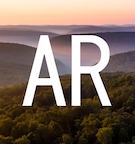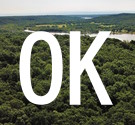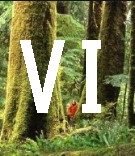|
|

|
West Virginia Expedition, Oct. 2006 - Notes, Photos
|
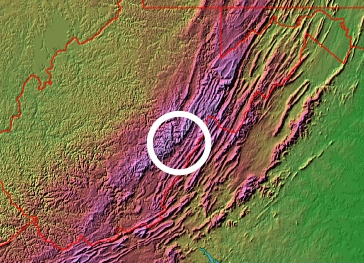
Expedition location: Pocahontas County, West Virginia.
|

Pocahontas County has the highest average elevation, and lowest
human population density, in the eastern U.S. Much of the county
is within the boundaries of the vast Monongahela National Forest.
|
|

North Carolina investigator Patty
Lee. Sunday, October 15, 2006, the morning after her
first Class A sighting during the Saturday night rock-throwing
encounter (see notes below). In the photo she is learning
how to use the Raytheon 250D thermal imager, in preparation
for a return forray to where she had her first sighting,
the night before.
Portable thermal imagers are relatively new technology.
They will be essential for any attempted long term studies
of these animals. Sasquatches have been *viewed* (but
not recorded) through thermal viewers on at least four
occassions. They have been viewed enough times, by different
people, for us to be confident that they do indeed have
a noticeable thermal signature like every other mammal.
|
|

A group of expeditioners heads back to the area where the
rock-throwing encounter occured on Saturday (10/14/06).
Thirteen people were present initially. Five people eventually
pulled out and returned to base camp. Eight remained. See
the links below for their first-hand descriptions of the
group encounter. |
Dates of expedition: October 12 -15, 2006
Number of particpants: 25
Location: A tributary of the Greenbrier River, on the eastern
side of West Virginia. The specific location will not be published
online.
Preface: All types of evidence are sought on these expeditions,
but the degree of success of an expedition is not measured
by objects that are collected. Some people mistakenly assume
that if we did not "find something" on a given expedition,
then it was not successful. They are thinking of items that
can be brought back for show and tell, as opposed to things
that can only be observed and experienced in the field. The
most compelling evidence for the participants are their own
observations, which are annecdotal evidence to everyone else.
The value of annecdotal evidence is often overlooked. A build-up
of annecdotal evidence always precedes and guides formal research
(which eventually yields items for lab scientists to study).
Bigfoot/sasquatch research is still in the build-up stage.
Bigfoot/sasquatch field research also bears a tricky responsibility,
with respect to the best interests of these animals -- knowing
which information to not release publicly, such
as specific locations in sensitive areas, or any other information
that could be used by people with violent intentions. Consequently,
you will find in the notes from the participants some important
behavioral observations, along with some intentionally
vague descriptions of locations and protocols which are inextricable
parts of their stories. There is a reason and need for this
vagueness.
Summary: On this expedition indicative sounds were heard each
day within a five mile radius of the base camp. On Saturday
night a group of thirteen (13) participants said they were approached
and intimidated by 2-3 sasquatches on a trail along a tributary
of the Greenbrier. The incident lasted 2 hours. During the encounter
there was one brief Class A sighting by Patty Lee (NC-BFRO)
when the headlamp of Olof Seaman (VA-BFRO) briefly illiminated
a large sasquatch as he (Olof) moved along a trail back towards
his group. Those who were present came away very excited (some
were slightly traumatized) by the encounter. They were unanimously
adamant that the sasquatches were trying to keep them "herded"
together, by skillfully throwing large rocks in the paths of
those who tried to separate and move away from the group. After
two hours the activity ceased.
The next night three thermal cameras were retrieved from a different
satellite camp and brought back to the Saturday night location,
but there was no repeat of the events -- no sounds, no rock
throwing, no knocks, etc. The cameras recorded continually but
got nothing unusual.
|

Chris P. was one of the thirteen observers present during
the Saturday night enounter. In the photo he crouches down
at a spot where one of the animals was heard moving by most
of the people present. |

Rock outcroppings in the area of the Saturday night encounter
happened. See the notes from participants, below. |
Notes from some participants:
- Notes from various people -- click here
-
Notes from Olof Siemen (Virginia BFRO) -- click here
Notes from Jerry and Melissa Adair (Georgia BFRO) -- click
here
|
|

A possible stick formation, where logs are positioned
in a woven-looking configuration. The purpose for stick
formations, which have been found in both western and
eastern states, may be to create recogizeable sign posts
in an otherwise monotonous environment. Forests can look
very different at different times of year. The larger
formations usually do not get covered with snow.
|
|

Pockets of agriculture in the mountain valleys provide
forage for large herds of deer. The deer herds are larger
and more numerous on the outskirts of the farms and along
the major rivers. Several major rivers in West Virginia
have their headwaters in Pocahontas County. |
|
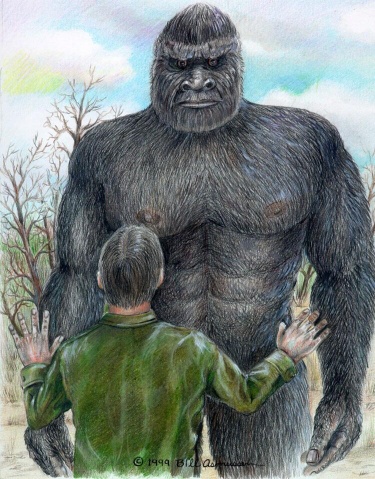 |
|
A hunter's eyewitness composite sketch (assisted by artist
Bill Asmussen) of his close encounter with a sasquatch
on Fort Gordon Army Base, Richmond
County, Georgia, December 1979.
The largest of the three animals that approached and threw
rocks and logs at the group on the 2006 West Virginia
Expedition, may have been in this size range -- 9-10 feet,
~1500 pounds.
|
|
|
|




